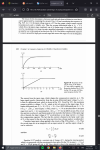Here is another questions I should know the answer too, but don't. When we turn up the volume, it is the voltage level across the speaker (across the amp output) that is increasing correct? And, the current draw from the amp is dependent on the impedance of the speaker and the voltage across the speaker/amp output. V=IR, so for a fixed resistance (at a particular signal frequency which will correspondences to a particular speaker impedance), as we turn up the volume knob, we are increasing the voltage and this will in turn draw more current. Where amps get into trouble is when the impedance drops down low, and the volume is turned up, the amp must attempt to output a higher and higher current, which it may not be able to do. How would that affect the higher frequencies of the audio signal from the speakers?
One other question, is the slew rate of an amplifier related to its maximum frequency? It seems like they should be because both relate to the rate of change of the signal over time. .
What is considered a good or great slew rate for an amp. Finally, I think slew rate is change in voltage over time, but I would think an amplifiers ability to effect a change in current over time would be just as important.
Kinda all over the place with this post. Thanks.
One other question, is the slew rate of an amplifier related to its maximum frequency? It seems like they should be because both relate to the rate of change of the signal over time. .
What is considered a good or great slew rate for an amp. Finally, I think slew rate is change in voltage over time, but I would think an amplifiers ability to effect a change in current over time would be just as important.
Kinda all over the place with this post. Thanks.


